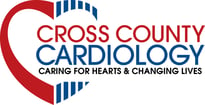Welcome back to our educational series! Today, I want to talk about something that doesn’t always get a lot of attention but can have serious consequences if it’s ignored—blood clots, specifically deep vein thrombosis (DVT). You might not give the idea of a blood clot much thought, but understanding how and why they form could make a big difference in keeping you or someone you love safe. So let’s break it down.
What Exactly is a DVT?
DVTs are blood clots that typically form in the deep veins of the legs, most commonly in the calf muscles. This can happen when blood flow becomes sluggish, the walls of the blood vessels become irritated or damaged, or your blood becomes unusually sticky—a condition we refer to as a "hypercoagulable state." These three factors are known collectively as Virchow’s Triad (named after the German physician who first described them).
The concerning part? These clots don’t always stay in your legs. They can break loose, travel to your lungs through your bloodstream, and get stuck there, leading to a **pulmonary embolism (PE)**. A PE can severely disrupt blood flow and oxygen exchange, which can be life-threatening.
DVT and PE by the Numbers
Let’s talk stats for a moment because this might surprise you. Each year in the United States, somewhere between **300,000 and 600,000 people** develop DVTs or PEs, according to the CDC. About **60,000 to 100,000 of these cases turn fatal**. That’s more than many people assume, and it underscores how essential it is to stay informed.
What’s even more alarming is that up to **50% of DVT cases** are "silent," meaning they cause no symptoms. When they do cause symptoms, people might experience symptoms like pain or swelling in one leg, but these can sometimes be mistaken for normal soreness or strain.
Here’s another eye-opening number: **as many as 1 in 3 people** who’ve had a DVT or PE will have another clot within 10 years if no preventive measures are taken. Prevention, as you’ll see, is absolutely key.
What Causes DVTs?
While inactivity is one of the most common triggers, it’s not the only culprit. DVTs can result from a combination of situations and risk factors, including:
- **Prolonged periods of immobility**: Long flights, sitting for hours at work, or recovering from surgery can slow blood flow significantly.
- **Genetic conditions**: Some people inherit blood disorders that make clots form more easily. These are known as hypercoagulable states.
- **Trauma or surgery**: A damaged vein wall creates the perfect environment for clots to form.
- **Certain medications**: Birth control pills or hormone replacement therapy can sometimes increase clotting risk, especially when combined with other factors like smoking.
- **Chronic illnesses**: Conditions like cancer, obesity, inflammatory diseases, or even COVID-19 have all been linked to a higher risk of clot formation.
The intersection of these risk factors is where trouble often begins. For example, traveling on a long-haul flight while taking medication that increases clotting might set the stage for a DVT.
The Warning Signs You Should Never Ignore
While DVTs don’t always cause symptoms, when they do, here’s what to watch for:
- Swelling in one leg (or less commonly, both)
- Cramping or soreness that doesn’t go away
- Skin that’s warm to the touch and may look red or discolored
If the clot has already moved to the lungs, you might notice:
- Sudden difficulty breathing
- Chest pain that’s sharp or worsens with deep breaths
- A rapid pulse
- Dizziness or lightheadedness
These are medical emergencies—you need to call 911 or get to a hospital immediately.
How to Prevent Blood Clots
The best way to deal with DVT is to stop it from happening in the first place. For many people with otherwise low risk, **staying active** is the simplest form of prevention. If you’re taking a long flight, try to stretch your legs or walk the aisle every hour or so. Even just flexing your feet can help encourage blood flow.
For those with increased risk, prevention might include wearing **compression stockings**, taking blood-thinning medications if recommended, or undergoing routine monitoring. If you or someone in your family has a history of clotting issues, it’s worth discussing genetic testing to rule out inherited clotting disorders.
How We Can Help
Here at CrossCounty Cardiology, we believe prevention and tailored management are the cornerstones of good health. If you’re concerned about your risk of DVT or PE, we take a comprehensive approach to help you minimize those risks. That might mean assessing your family history, evaluating your lifestyle factors, or even exploring advanced testing and imaging.
For our patients dealing with an existing clot, we provide cutting-edge care using the latest treatments. From anticoagulants that prevent further clotting to interventional procedures for severe cases, our goal is to protect your health and keep complications to an absolute minimum. We’ll work with you to customize a plan that fits your specific needs.
The bottom line is this: blood clots are both dangerous and preventable. By staying active, listening to your body, and reaching out for help if you think you’re at risk, you can avoid what could otherwise become a life-threatening condition. And we’re here to help every step of the way.
Stay tuned for more educational content, and remember—your health is in your hands. Take action and stay informed. See you next time!




